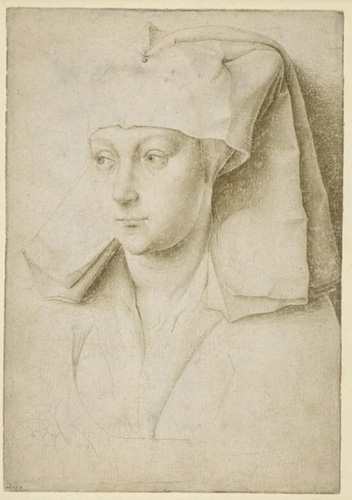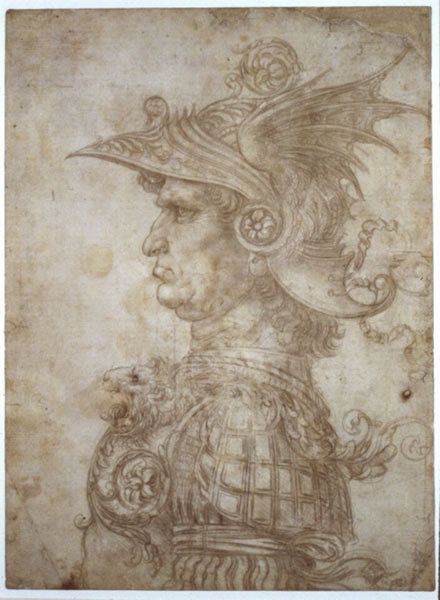Discover how masters from Leonardo to Jasper Johns have employed metalpoint techniques in a superbly beautiful exhibition in London.
Organized by the National Gallery of Art in Washington, D.C., and in association with the British Museum, London, is an exceptional exhibition offering some of the biggest names in the history of art. Featuring — among others — Rogier van der Weyden, Leonardo da Vinci, Albrecht Dürer, Rembrandt, Jasper Johns, and Otto Dix, “Drawing in Silver and Gold: Leonardo to Jasper Johns” is a once-in-a-lifetime opportunity to view nearly 100 master drawings done in metalpoint.

Raphael, “The Virgin and Child,” ca. 1509, silverpoint, 143 x 111 mm. (c) British Museum 2015
The technique involves the artist using a metal stylus, typically made from silver, on paper coated with an abrasive ground. When the stylus is dragged across the paper, tiny pieces of metal flake off and adhere to the page. The results are often outstanding, though the artist must be careful, as reworking is very difficult. The hardness of the metal allows the artist to create extremely fine and detailed line quality. Over time, the silver oxidizes and turns a beautiful maroon color, a feature collectors have come to admire.
The exhibition explores the technique’s development and evolution over six centuries, highlighting the variety of artistic styles it has seen. The museum reports, “During the Renaissance metalpoint became popular both north and south of the Alps boefore cheaper graphite replaced it from around 1550. In northern Europe metalpoint continued to be used in preparation for prints or in travel sketchbooks. From the late 17th century the technique was virtually forgotten until the 19th century when the admiration for Renaissance art sparked its renewed use.”

Rogier van der Weyden, “Portrait of an Unknown Woman,” ca. 1435, silverpoint, 166 x 116 mm.
(c) British Museum 2015
An outstanding example from the exhibition is Leonardo da Vinci’s “Bust of a Warrior in Profile,” circa 1475–1480. The famous drawing is absolutely stunning in the amount of detail and convincing form it achieves. The lines, which are extremely fine, are nearly undetectable even viewed close up. Another highlight of the show is Raphael’s “The Virgin and Child” of 1509. The study shows a minimally executed sketch of the two, the Virgin’s hair and body indicated by only a few lines while the infant Christ is seen in the lower right, joyfully gazing out of the frame. Although the work is limited, Raphael was capable of capturing graceful form, emotion, and naturalism.
“Drawing in Silver and Gold: Leonardo to Jasper Johns” opens on September 10 at the British Museum and will be on view through December 6.
To learn more, visit the British Museum.
This article was featured in Fine Art Today, a weekly e-newsletter from Fine Art Connoisseur magazine. To start receiving Fine Art Today for free, click here.








